
Promoting collaborative, pro-poor agricultural
innovation
2003-2023


Climate Resilient Agriculture and innovation system
development: Forsustainableandproductiveuseoflandand
water
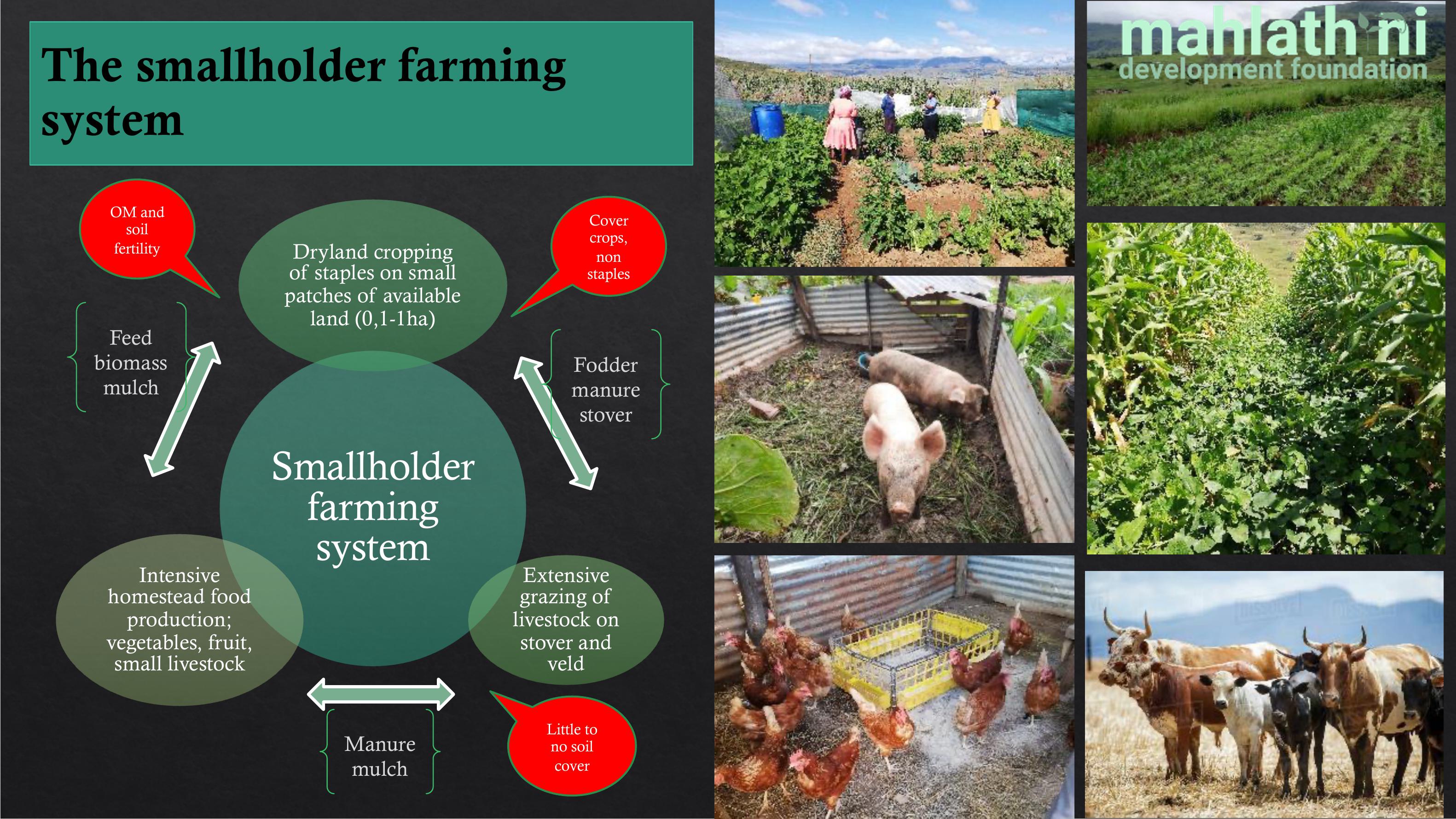
The smallholder farming
system
Smallholder
farming
system
Dryland cropping
of staples on small
patches of available
land (0,1-1ha)
Extensive
grazing of
livestock on
stover and
veld
Intensive
homestead food
production;
vegetables, fruit,
small livestock
Feed
biomass
mulch
Manure
mulch
Fodder
manure
stover
Cover
crops,
non
staples
OM and
soil
fertility
Little to
no soil
cover

Principles ‘translated’

DSS Guiding principles

CRA
learning
group
VSLAs
Marketing
committees
Water
committees
Livestock
associations
Youth
groups
CCA impact
assessments
Adaptive
strategies and
planning
Innovation and
practices
Implementation
Monitoring,
cyclical review
and evalution
Government
departments
Traditional
authority
Wardcommittees
Local
Municipality
Business
community
Academia
Civil
Society
Innovation
platforms –
clusters of LGs
Associations
and
organisations
Multistakeholde
r platforms
CRA learning groups: Process for development of social agency

PRESENT SITUATION
INTERVENTIONS AND PROCESSES TO BUILD
SOCIAL AGENCY
IMPROVED DECISION MAKING AND
GOVERNANCE OUTCOMES
Actions
Joint analysis
(Outcomes) Actions/Outcomes
Co
-
learning (Outcomes)
Actions/Outcomes
Joint decision making
(Outcomes)
Focus group discussions and mapping:
socio
-ecological patches
Present situation in land use and
management, including needs and
issues (emerging from discussions)
Focus group discussions/ Thematic workshop:
CC, resource issues (erosion, alien invasion,
wetlands and rivers, water access, grazing
management)
Socio
-
ecological mapping: Impact
of human interventions and
climate on the environment
Adaptive planning workshop using
layered socio ecological maps (expert and
community combined)
Management plan for water and land
resources
Village walks for detailed resource
discussions and mapping (key
informants)
Community workshops on CC impact (social,
economic, farming, resources). Adaptive
strategies (communities and stakeholders
combined)
CC impact and adaptive
strategies
Expert ecological mapping (GIS)
incl
EIA, Veld assessment, water resource
survey etc. (with key informants)
Prioritization of adaptive measures, and
practices
Village based learning groups
Further social organisations develop (
including markeintg, microfinance,
water livestock etc.)
Linked youth groups in resource
management and enterprise development
Experimentation with new practices and
innovations in Climate resilient agriculture
(Individual smallholders and support
organisations)
CRA experimentation and
implementation
Iterative experimentation with CRA
practices to tackle more complex issues,
Improved land use and coordination at
community level
Seasonal review and re
-planning
Stakeholder engagement
- innovation
platforms and multi stakeholder forums
etc
Focus group discussions,individual
interviews
Local structures and decisions
made by them, including factors
that influence individual and
community decision making
(emerging from discussions)
Thematic focus areas: water access and
management , livestock and grazing
management, natural resources management,
Marketing committees , VSLAs
Learning group discussions and
prioritization of urgent issues
Committees discuss, plan and
implement (with support) prioritized
actions in thematic areas
Community level structures develop for
improved governance
-
with broader and
equitable community involvement linked
to local and traditional authorities
Further engagement with stakeholders for
expanded implementation options around
water and resource management
LGs, committees and community
structures engage in resource
management projects with a range of
stakeholders
OUTCOMES
Improved participatory decision making
to support implementation and innovation
Improved governance
- new community
based structures
Improved governance improved rules and
logistics within community based
structures .
Improved governance
- coherent
collaboration with stakeholders and role
players.
Collect and
analyse
information
Identify
options and
implement
Build improved
systems and
social agency
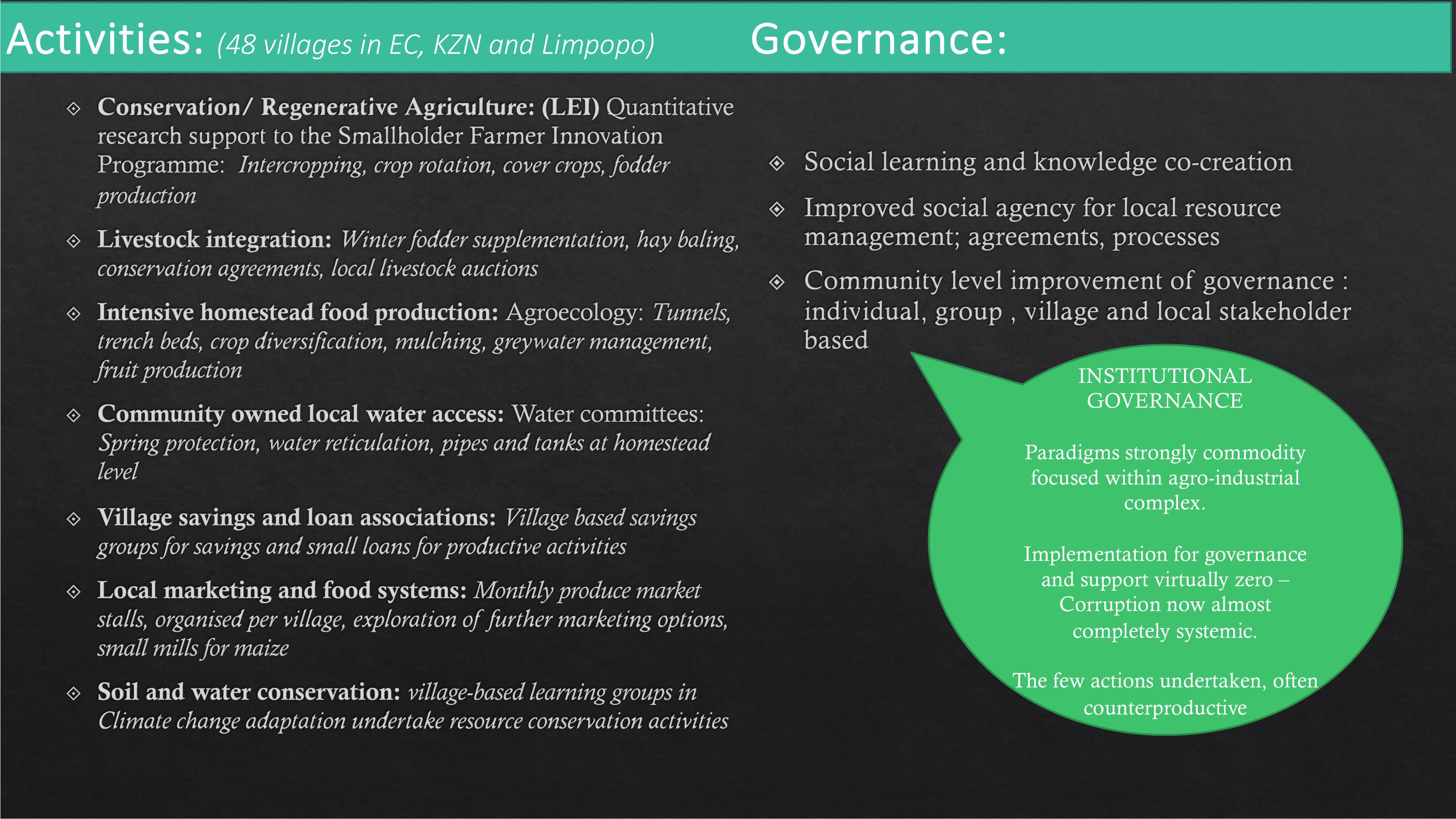
Activities:
(48 villages in EC, KZN and Limpopo)
Governance:
INSTITUTIONAL
GOVERNANCE
Paradigms strongly commodity
focused within agro-industrial
complex.
Implementation for governance
and support virtually zero –
Corruption now almost
completely systemic.
The few actions undertaken, often
counterproductive
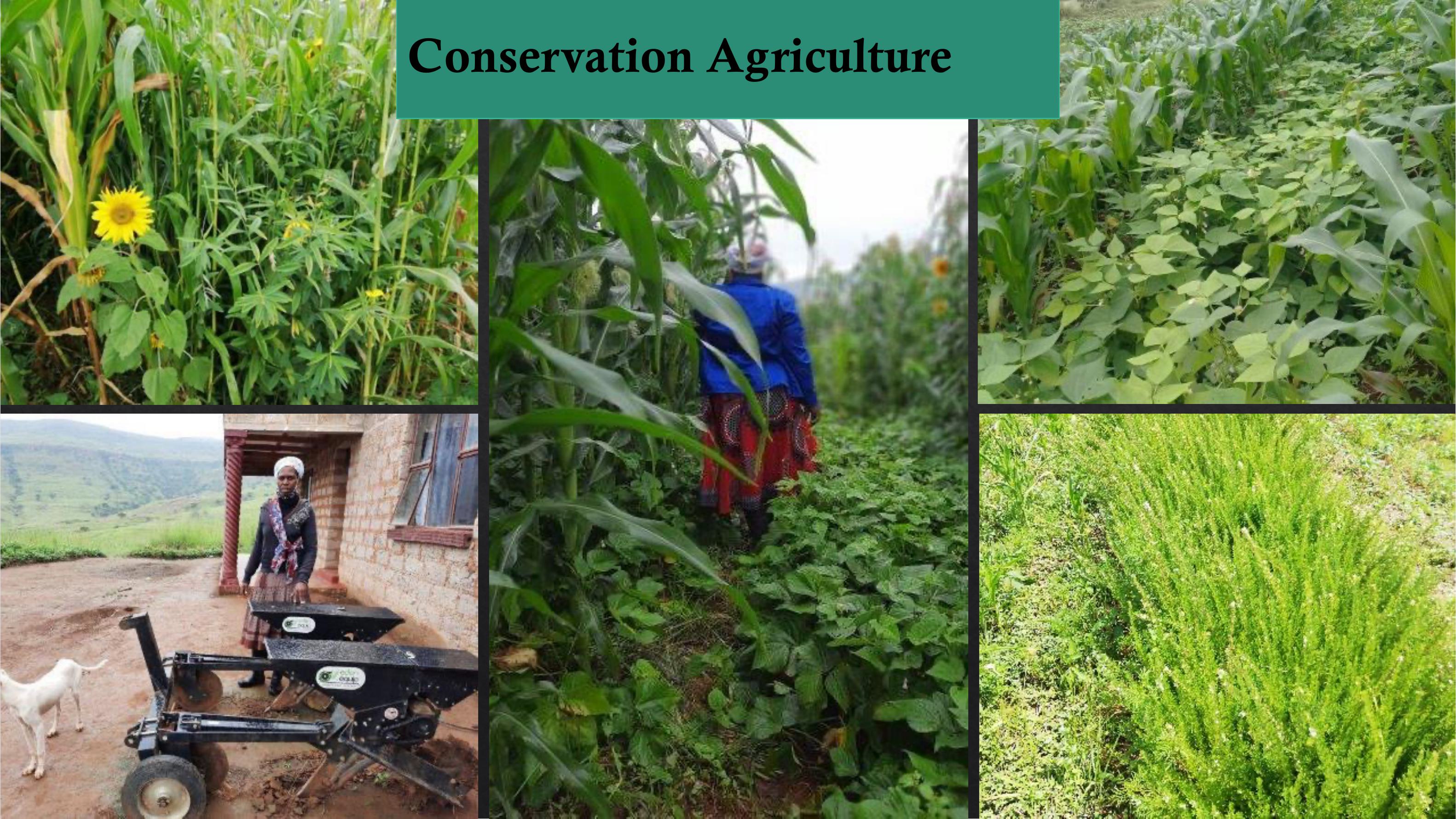
Conservation Agriculture

Local farmer centre for input supply and salesSummer cover cropsWinter cover crop mixDolichosbeans CA plot
Strip cropping perennial fodder with short season maizeMaize and cowpea intercropped plotLate bean planting alongside short season maize and other CA
plots
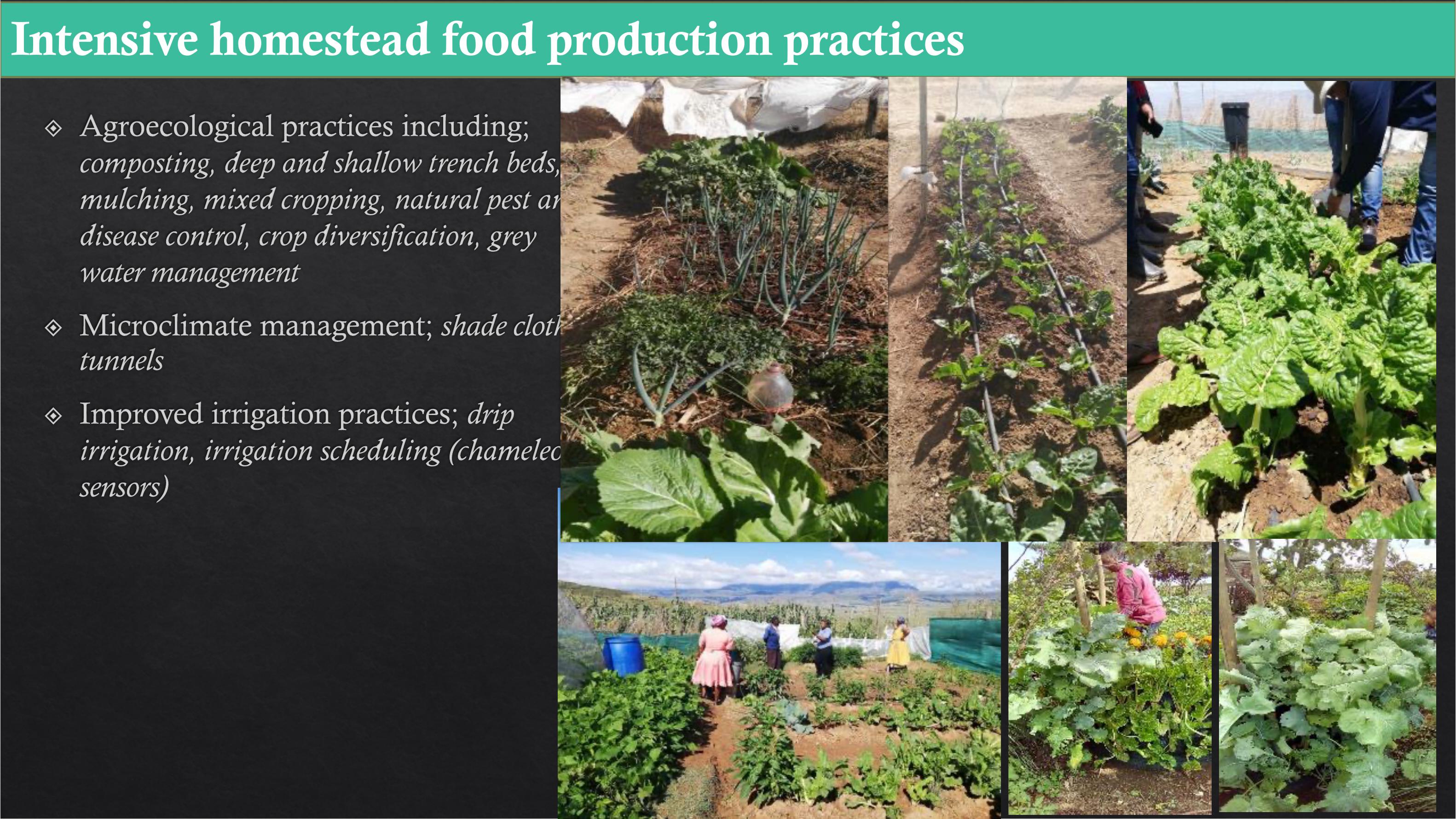
Intensive homestead food production practices
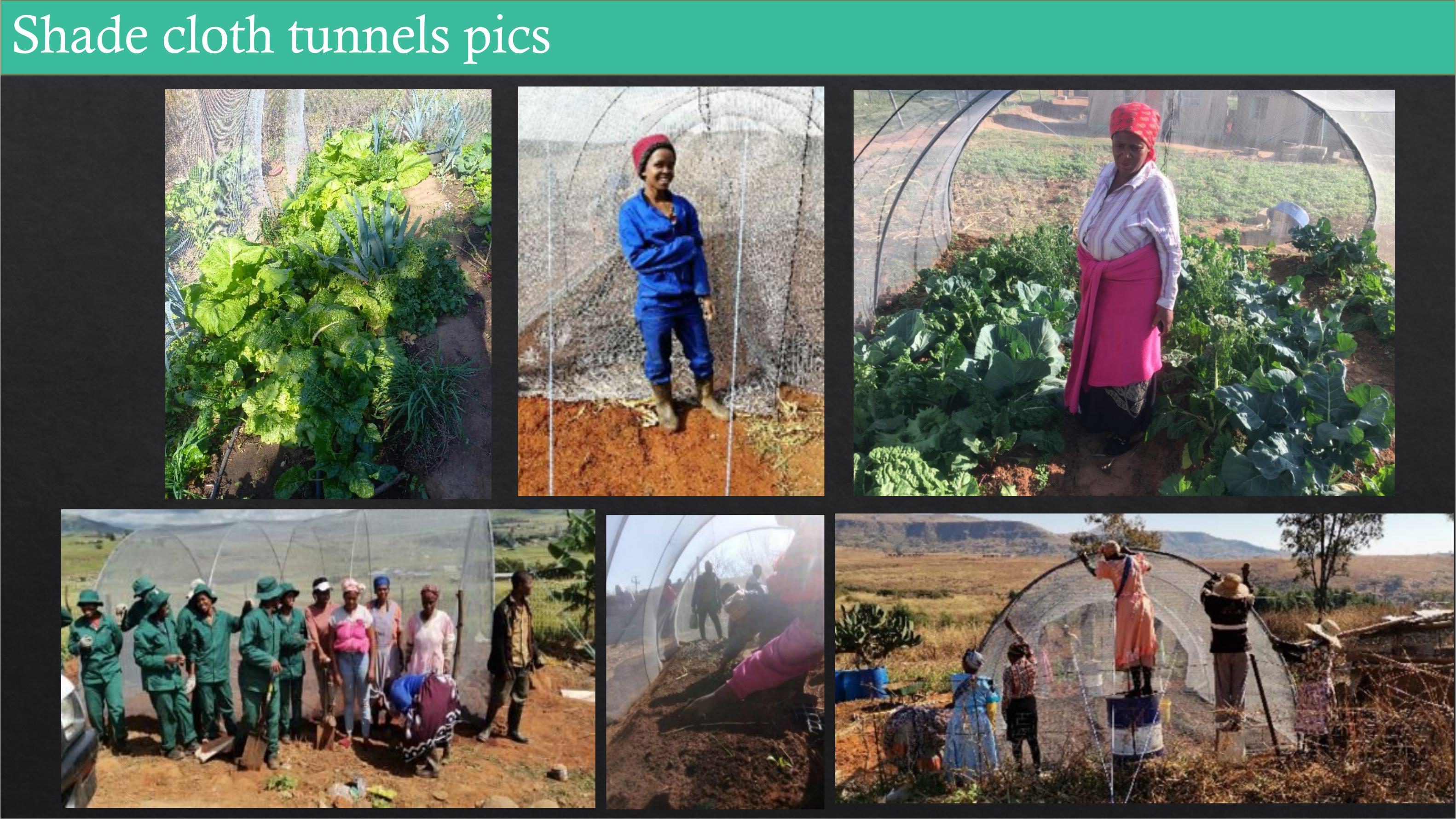
Shade cloth tunnels pics
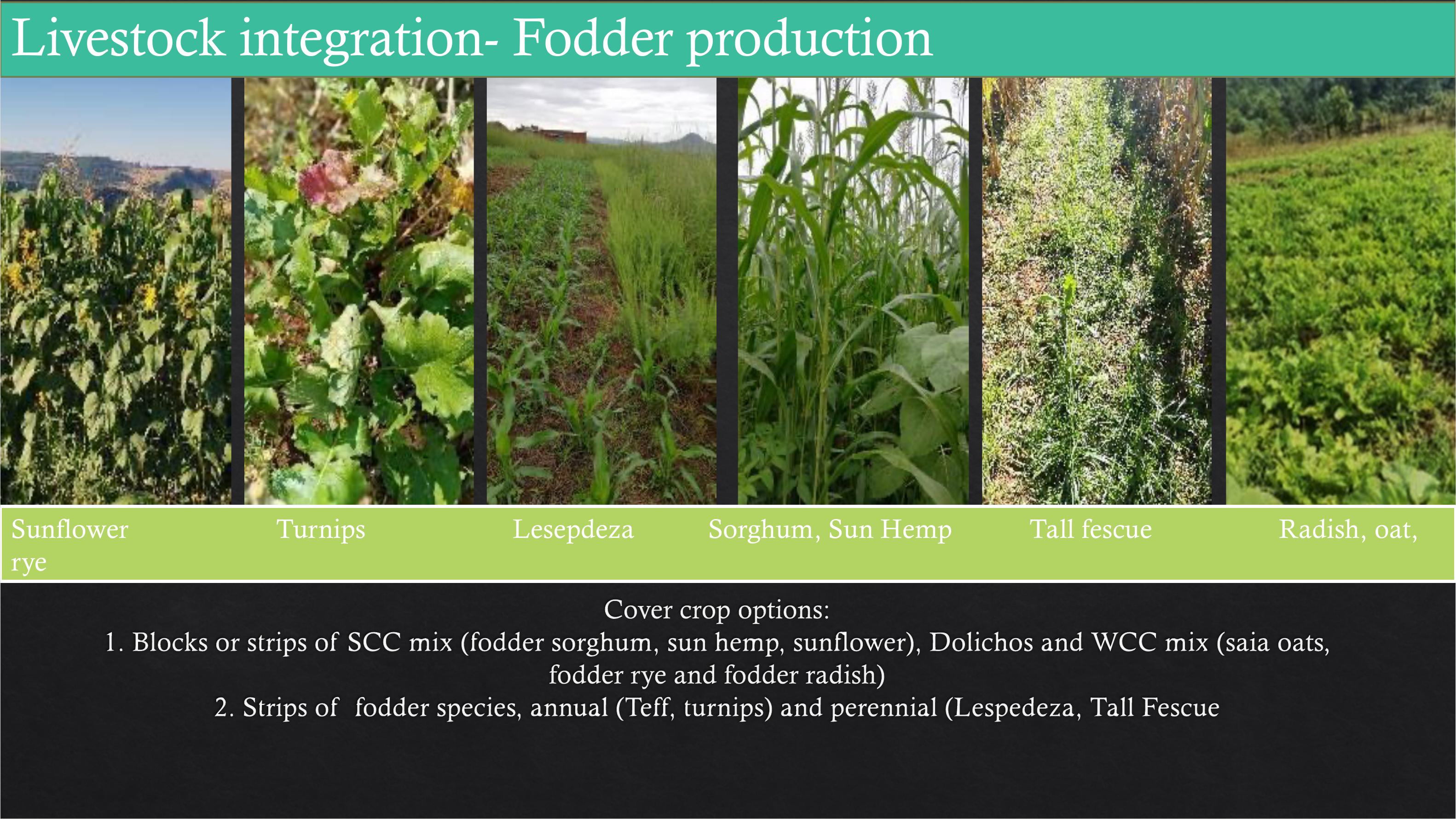
Livestock integration- Fodderproduction
Sunflower Turnips LesepdezaSorghum, Sun Hemp Tall fescue Radish, oat,
rye

Livestock integration – Grazing,fodder, manure

Local Water access: Spring protection and boreholes
Slotted pipe
Digging offtake
for slottedpipe
covering with
bidem, stones and
soil (Ezibomvini,
Bergville)
V-box, header
tanks and
communal tap –
Stulwane
(Bergville)
Appropriate tech and low cost options

.
~R255 /
farmer/
month saved
Village Saving and LoanAssociations (VSLAs)
Bulk Loan
Funds- new
innovation:
larger savings
and longer
term for greater
loan potential –
specifically for
production

LocalMarketingOptions: Appropriate for smallholder farmers
Presently
the best
option

.
Improvement of livelihoodsand incomes
Commodity
Averagemonthlyincome/participant
Annual income
potential
Broilers
R1
025
R12
294
Layers (eggs)
R641
R7
692
Field crops:
Maize
Beans
R210
R238
R3
713
R2
850
Vegetables
R247
R2
964
All commodities
Averagemonthlyvalueof
food/participant
Estimate based on interviews
R700
R8 400
Commodity for a selection of
participants only
Averagemonthlyincome/participant
Annual income
potential
Green Maize
R1
300
R15
600 to R24 000
Stall fed calves
R750
R9
000 to R50 000
Totalvalueofproduction(
excl
the selection)
R3
060
R36
713
Averagedfrom
production records. From
further individual
interviews actual averages
Between R1 000-R3 300.
More than doubled
production and
incomes over a 2 -
year period.
Shows what is
possible but much
broader support
required (more
people, more villages)

Resilience indicators
Increase for EC (21)
Increase for KZN (45)
Comment
Increase in size of farming
activities
Gardening; 231%
Field cropping; 0%
Livestock: 8%
Gardening: 18%
Field cropping: 153%
Livestock: 6%
Cropping areas measured, no of livestock assessed
Dryland cropping has reduced significantly due to drought
conditions and infertile soil
Increased farming activities
Yes
Yes
All involved in gardening, field cropping and livestock management
Increased season
Yes
Yes
Forfieldcroppingandgardening
- autumn and winter options
Increased crop diversity
Crops: 31 new (Ave11)
Practices: 24 new(Ave10)
Crops: 21 new (Ave 7)
Practices: 20 new (ave8)
New crops are ones not previously grown in the area
Management options include; drip irrigation, tunnels, no
-till
planters, JoJo tanks, RWH drums,
Increased productivity (per
season)
Gardening: 116kg
Field cropping:
-218kg
Gardening: 167kg
Field cropping: 506kg
Based on increase in yields (mainly from tunnels and trench beds
for gardening).CA for field cropping
Increased water use efficiency
6
6
Access, RWH, water holding capacity, irrigation efficiency and
water access rated
. Scale:0= same or worse than before; 1= somewhat better than before, 2=
much better than before x 4 criteria (values of 0 to 8)
:
Increased income
R1 031
R1 801
Increase in average monthly income (Rands): Mostly through local
marketing and small businesses.
A number of participants have lost employment and
grant incomes and replaced these with farming. Around 10% of participants have not improved their
incomes
Increased household food
provisioning (Kg/week)
Vegetables:23kg
Dryland crops:10kg
Poultry: 2kg
Vegetables:17kg
Dryland crops:18kg
Poultry: 2kg
Foodproducedandconsumedinthehousehold
Dryland crops include maize, legumes, sweet potatoes, potatoes
Increased savings
R322/month
R262/month
Averageofsavingsnowundertaken
Increased social agency
3
3
Learning groups, farmer centres, local water committees
Increased informed decision
making
2
2
Own experience, local facilitators, other farmers, facilitators,
extension officers
Positivemindsets
2
3
More to much more positive about the future: Much improved
household food security and food availability
Impact: Resilience snapshots: individual interviews

.
Thank you